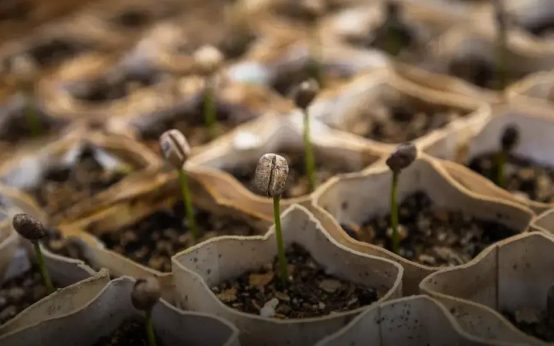Growing tomatoes that actually produce fruit can be both rewarding and challenging. Whether you’re a seasoned gardener or a beginner, understanding the right techniques is crucial to success. Choosing the right variety and preparing your soil properly can make all the difference. Additionally, proper watering and pest control methods will ensure that your tomatoes thrive. Let’s explore how you can have a bountiful harvest in your backyard.
Choose the Right Tomato Variety
Different tomato varieties have unique requirements and benefits, making it crucial to choose the right type for your garden. Consider the growing conditions of your area, including temperature and sunlight, as they affect tomato growth substantially. Some varieties are more suitable for cooler climates, while others thrive in warmer conditions.
One key aspect to consider is the growth habit of the tomato plant. Indeterminate varieties grow and produce fruit throughout the season and usually require staking or caging due to their tall growth. In contrast, determinate varieties grow to a fixed size, allowing for easier management and being ideal for container gardening or smaller spaces.
Heirloom varieties offer rich flavors and colors, but may require more care and attention, as they can be vulnerable to diseases. Hybrid tomatoes, on the other hand, are bred for disease resistance and often provide more consistent yields.
Researching and selecting varieties that are known to perform well in your region is vital. Check local gardening resources or consult with experts at garden centers. This will help ensure that you choose the perfect tomato variety that can produce fruit effectively in your garden.
Optimal Soil Preparation Techniques

Preparing the soil is crucial for the successful growth of tomato plants. By following the right techniques, you can ensure that your tomatoes have the nutrients they need to thrive. Soil testing is the first step. This process helps you understand the pH and nutrient levels present in your soil. Tomatoes prefer slightly acidic soil with a pH between 6.0 and 6.8.
After testing, if your soil is too acidic, you might need to add lime to increase the pH. Conversely, if your soil is too alkaline, sulfur can be used to lower the pH. Incorporating organic matter is also essential. Consider adding compost, aged manure, or peat moss to improve the soil’s fertility and structure. These organic materials enhance the soil’s ability to retain moisture and provide a steady supply of nutrients.
Tilling the soil is another important step. This helps in loosening the earth, making it easier for tomato roots to penetrate. Aim to till to a depth of 12 inches to accommodate the root system of your tomato plants.
Drainage considerations
must be taken into account as well. Ensure that the soil is well-draining to prevent waterlogging, which can lead to root rot.
For best results, plant tomatoes in raised beds or ridges, which can help improve drainage and prevent diseases. Using mulch can also help in retaining moisture and regulating soil temperature. Regularly rotating crops in your garden every year helps in preventing soil-borne diseases and maintaining soil health.
Essential Watering Practices
Proper watering is vital for healthy tomato plants and high fruit yield. Frequent and Consistent Watering is key. Ensure the soil is moist to a depth of about 6 inches, maintaining steady moisture without waterlogging. Morning Watering is recommended to allow foliage to dry, reducing disease risk. Consider using a drip irrigation system for controlled delivery. This helps in maintaining consistent moisture levels.
Mulching plays a significant role in water retention. Apply a 2-3 inch layer of organic mulch around plants to minimize evaporation and maintain soil temperature. Observing Weather Conditions is also crucial. Adjust watering frequency based on rainfall and temperature changes. Wilting leaves and cracked fruits are signs of inconsistent watering.
This attention to detail in watering will significantly influence plant vitality and productivity. Focus on providing consistent care to ensure strong growth and abundant, healthy fruit production.
Effective Pest Control Methods

When it comes to ensuring your garden is free of pests while growing tomatoes, it’s important to utilize methods that are both effective and environmentally friendly. Many common pests, such as aphids, whiteflies, and tomato hornworms, can severely damage your tomato plants if not addressed promptly.
One effective approach is to encourage natural predators like ladybugs and lacewings, which can help control the pest population. You might also consider using companion planting techniques. Planting basil, marigolds, or garlic near your tomatoes can help deter pests naturally.
For those looking for chemical-free alternatives, consider creating a homemade insecticidal soap by mixing water with a small amount of dish soap. Spray the solution directly onto affected areas to keep pests in check.
Regularly inspecting your plants for signs of pests is crucial. Look for discolored leaves, small holes, or any noticeable insects. Remove any infested leaves by hand to prevent spreading. Additionally, ensure your garden has proper airflow and weed control, as these factors can invite unwanted pests.
For a balanced approach, consider using organic pesticides when necessary, but apply them cautiously to avoid harming beneficial insects. By combining these strategies, you can maintain a healthier garden and improve your chances of a bountiful tomato harvest.
Harvesting and Maintenance Tips
For a successful tomato harvest, it’s crucial to know the right time to pick your tomatoes. Look for signs of ripeness, such as a deep red color, depending on the tomato variety, and a slight softness when gently squeezed.
Using proper harvesting techniques ensures that you don’t damage the plant or the fruit. With clean hands or pruning shears, gently twist and pull the ripe tomatoes from the vine. This minimizes the risk of injuring the plant, which could affect future yields.
After harvesting, regular maintenance of your tomato plants is essential.
Pruning
can help in maintaining healthy growth and maximize fruit production. Remove any yellowing or dead leaves to improve air circulation and reduce the risk of disease. Additionally, check for pests regularly and implement organic control methods if needed. This can include introducing beneficial insects or using natural insecticidal soap to keep pests at bay.
Ensuring your tomato plants get proper sunlight and water management in this phase cannot be overemphasized. Conversely, it is vital to avoid waterlogging the roots and ensure good drainage to maintain plant health. Maintaining a balanced fertilization schedule helps to replenish the nutrients in the soil, supporting continued plant vitality and fruit production.
Monitor the soil’s pH levels
and adjust with lime or sulfur as needed to keep them within the optimal range.


 Harvesting Herbs: Secrets for Best Flavor Timing
Harvesting Herbs: Secrets for Best Flavor Timing  Companion Planting: Discover Plants That Thrive Together
Companion Planting: Discover Plants That Thrive Together  How to Grow Herbs Indoors Easily on Your Windowsill
How to Grow Herbs Indoors Easily on Your Windowsill